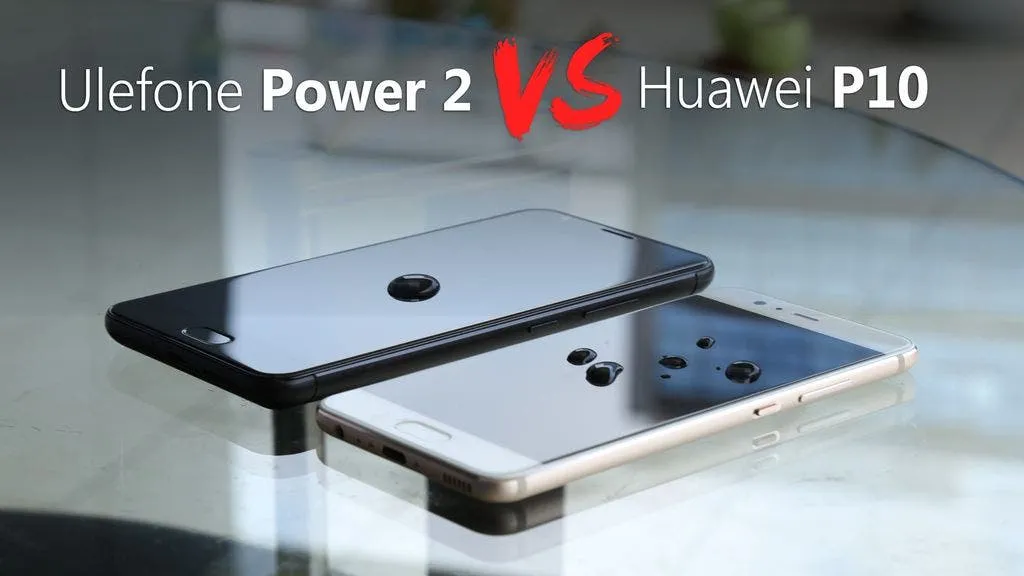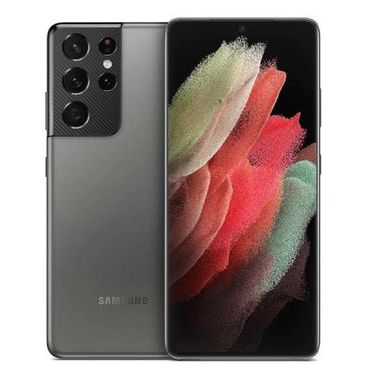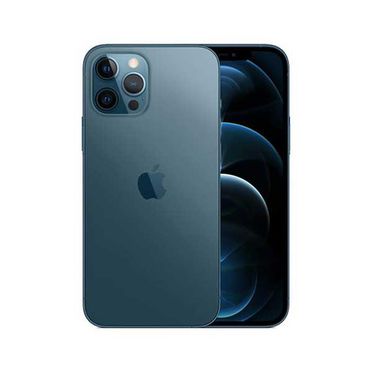We call this comparison the "battle of two worlds" because iOS and Android users are on different parts of the divide. While the top smartphone model for iOS users is the iPhone 12 Pro Max, Android users have a couple of options and one of them is the recently announced Samsung Galaxy S21 Ultra. This comparison will present a detailed specs sheet of both smartphones. It will also succinctly discuss the major aspects of this device. However, you will be the final judge if there must be a winner.
Samsung Galaxy S21 Ultra Vs iPhone 12 Pro Max - specs sheet
General | Galaxy S21 Ultra iPhone 12 Pro Max | |||
| SIM Type | Single or Dual | Single or Dual | ||
| Dual SIM | Yes | Yes | ||
| SIM Size | Single SIM (Nano-SIM and/or eSIM) or Dual SIM (Nano-SIM and/or eSIM, dual stand-by) | Single SIM (Nano-SIM and/or eSIM) or Dual SIM (Nano-SIM, dual stand-by) | ||
| Device Type | Smartphone | Smartphone | ||
| Release Date | January 14, 2021 | October 13, 2020 | ||
| Design | ||||
| Dimensions | 165.1 x 75.6 x 8.9 mm | 160.8 x 78.1 x 7.4 mm | ||
| Weight | 227 - 229 g | 228 g | ||
| Display | ||||
| Type | Dynamic AMOLED 2X | Super Retina XDR OLED | ||
| Touch | Yes, with Multitouch | Yes, with Multitouch | ||
| Size | 6.8 inches, 1440 x 3200 pixels, 120 Hz | 6.7 inches, 1284 x 2778 pixels, 60Hz | ||
| Aspect Ratio | 20:9 | 19.5:9 | ||
| PPI | ~515 PPI | ~458 PPI | ||
| Screen to Body Ratio | ~ 89.8% | ~ 87.4% | ||
| Features | HDR10+, 1500 nits (peak), Corning Gorilla Glass Victus, Always-on display | HDR10, 1200 nits (peak), Scratch-resistant ceramic glass, oleophobic coating, Dolby Vision, Wide color gamut, True-tone | ||
| Notch | Yes, Center Punch Hole | Yes, Wide Notch | ||
Memory | ||||
| RAM | 12 GB / 16 GB | 6 GB | ||
| Storage | 128GB / 256 GB / 256GB | 128GB / 256 GB / 256GB | ||
| Storage Type | UFS 3.1 | NVMe | ||
| Card Slot | No | No | ||
| Connectivity | ||||
| GPRS | Yes | Yes | ||
| EDGE | Yes | Yes | ||
| 3G | Yes | Yes | ||
| 4G | Yes | Yes | ||
| 5G | Yes | Yes | ||
| VoLTE | Yes, Dual Stand-By | Yes, Dual Stand-By | ||
| Wifi | Yes, with wifi-hotspot | Yes, with wifi-hotspot | ||
| Bluetooth | Yes, v5.2, A2DP, LE | Yes, v5.0, A2DP, LE | ||
| USB | Yes, USB Type-C 3.2 | Yes, Lightning, USB 2.0 | ||
| USB Features | USB on-the-go, USB Charging | USB-Charging | ||
| Charging | 25W fast charging, 10W wireless charging, 4.5W reverse charging | 20W fast charging, 15W wireless charging | ||
| Water & Dust Proof | Yes, IP68 dust/water resistant (up to 1.5m for 30 mins) | Yes, IP68 dust/water resistant (up to 6m for 30 mins) | ||
Extra | ||||
| GPS | yes with A-GPS, GLONASS, BDS, GALILEO | Yes, with A-GPS, GLONASS, GALILEO, QZSS | ||
| Fingerprint Sensor | Yes, In-Display | No | ||
| Face Unlock | Yes | Face ID | ||
| Sensors | Accelerometer, gyro, proximity, compass, barometer | Accelerometer, gyro, proximity, compass, barometer | ||
| 3.5mm Headphone Jack | No | No | ||
| Extra | NFC | NFC | ||
| FM Radio | Yes (Snapdragon models only) | No | ||
Camera | ||||
| Rear Camera | 108 MP, f/1.8, 26mm (wide), 1/1.33", 0.8µm, PDAF, Laser AF, OIS; 10 MP, f/4.9, 240mm (periscope telephoto), 1/3.24", 1.22µm, dual pixel PDAF, OIS, 10x optical zoom; 10 MP, f/2.4, 70mm (telephoto), 1/3.24", 1.22µm, dual pixel PDAF, OIS, 3x optical zoom; 12MP, f/2.2, 13mm (ultrawide), 1/2.55", 1.4µm, dual pixel PDAF, Super Steady video | 12 MP, f/1.6, 26mm (wide), 1.7µm, dual pixel PDAF, sensor-shift stabilization (IBIS); 12MP, f/2.2, 65mm (telephoto), 1/3.4", 1.0µm, PDAF, OIS, 2.5x optical zoom; 12 MP, f/2.4, 120˚, 13mm (ultrawide), 1/3.6"; TOF 3D LiDAR scanner (depth) | ||
| Features | LED flash, auto-HDR, panorama | Dual-LED dual-tone flash, HDR (photo/panorama) | ||
| Video Recording | 8K, 4K, 1080p | 4K, 1080p | ||
| Flash | Yes, LED | Yes, LED | ||
| Front Camera | 40 MP, f/2.2, 26mm (wide), 1/2.8", 0.7µm, PDAF | 12 MP, f/2.2, 23mm (wide), 1/3.6" | ||
| Front Video Recording | 4K@30/60fps, 1080p@30fps | 4K@24/30/60fps, 1080p@30/60/120fps, gyro-EIS | ||
Technical | ||||
| OS | Android v11 (One UI 3.1) | iOS 14.1, upgradable to iOS 14.2 | ||
| Chipset | Qualcomm Snapdragon 888 / Exynos 2100 (5nm) | Apple A14 Bionic (5 nm) | ||
| CPU | 2.84 GHz, Octa Core Processor | 2.8 GHz, Octa Core Processor | ||
| Core Details | Octa-core (1x2.9 GHz Cortex-X1 & 3x2.80 GHz Cortex-A78 & 4x2.2 GHz Cortex-A55) - International Octa-core (1x2.84 GHz Kryo 680 & 3x2.42 GHz Kryo 680 & 4x1.80 GHz Kryo 680 - USA/China | Hexa-core (2x3.1 GHz Firestorm + 4x1.8 GHz Icestorm) | ||
| GPU | Mali-G78 MP14 - International Adreno 660 - USA/China | Apple GPU (4-core graphics) | ||
| Pen Touch | Yes (Stylus) | No | ||
| Java | No | No | ||
| Browser | Yes, supports HTML5 | Yes, supports HTML5 | ||
| Multimedia | ||||
| Yes | Yes | |||
| Music | MP3, FLAC, APE, AAC, OGG, WAV, WMA, AMR, AWB | AAC, AMR, MIDI, OGG, FLAC, WMA, WAV, APE, MP3 | ||
| Video | MP4, MKV, AVI, WMV, WEBM, 3GP, ASF playback | Yes | ||
| Payments | Samsung Pay (Visa, MasterCard certified) | Apple Pay (Visa, MasterCard, AMEX certified) | ||
| Document Reader | Yes | Yes | ||
Battery | ||||
| Type | Non-Removable, Li-Po Battery | Non-Removable, Li-Ion Battery | ||
| Size | 5000 mAh | 3687 mAh | ||
| Starting Price | $1,199 | $1,099 | ||
Samsung Galaxy S21 Ultra Vs iPhone 12 Pro Max
Design
The Samsung Galaxy S21 Ultra has an overall square-ish look although the edges are a bit rounded. This phone uses a small center punch hole which takes the screen-to-body ratio to almost 90%. The iPhone 12 Pro Max on the other hand is more rounded and uses a big notch. With the notch size, the screen-to-body ratio of the display is just over 87%. Both smartphones have a sleek feel and a premium appearance.
On the rear, there is a huge difference between these devices. The iPhone 12 Pro Max uses the regular rounded camera module with three sensors and a flash inside it. However, the Galaxy S21 Ultra comes with something more unique. For the first time, the square camera module attaches itself to the edge of the phone. The module is rounded on two sides and flat on the other two sides. This design gives this phone a new look because it is not common.
Although both smartphones are about 229 g in weight, the iPhone 12 Pro Max is significantly thinner. It is a whopping 1.5 mm thinner than the Samsung Galaxy S21 Ultra. Both smartphones use Gorilla Glass on both sides with aluminum (S21 Ultra) and stainless steel (12 Pro Max) frame.
Display
On the display capabilities, it will be very tight to call. However, the Samsung Galaxy S21 Ultra has higher resolution, brightness, HDR, pixel density, and screen ratio. However, it is still tight to call because these features are user-dependent. Nevertheless, the iPhone 12 Pro Max prides on its Dolby Vision, Wide color gamut, and True-tone. These are optimizations that the Galaxy S21 Ultra does not use.
Hardware/Software
While the Galaxy S21 Ultra uses the Snapdragon 888 / Exynos 2100, the iPhone 12 Pro Max comes with an Apple Bionic A14 chip. These chips are built with the 5nm manufacturing process. However, the SD888 and Exynos 2100 uses Samsung's solution while the Bionic A14 uses TSMC's solution. On AnTuTu V8, the Bionic A14 chip hits 638,584. The Snapdragon 888 SoC crushes this score with over 700,000 points in most cases. As for the Exynos 2100, its AnTuTu V8 score is usually close to 700,000 (670,000 - 700,000). Both smartphones offer the same memory with no option for expansion. However, the Galaxy S21 Ultra offers more RAM. It offers 12GB/16GB RAM while the iPhone 12 Pro Max uses 6GB of RAM.
The software end is another purely user-dependent segment. If you are used to a particular software, you may be tempted to say it's the best. One thing we should know is that bot smartphones use the latest software available on both sides of the divide.
Camera
In the camera department, both smartphones use wide, ultra-wide, and telephoto sensors. While the iPhone 12 Pro Max gets a point with its TOF 3D LiDAR scanner, the Galaxy S21 recovers with its periscope telephoto lens which gives it more zooming capacity. While the maximum zoom capacity of the iPhone 12 Pro Max is 2.5x, the Galaxy S21 Ultra gets up to 10x. Over the years we have got to realize that mostly give a false idea of a good camera. However, while the Galaxy S21 Ultra is using a 108MP f/1.8 main sensor, the iPhone 12 Pro Max comes with a 12 MP, f/1.6. Both smartphones support Optical Image Stabilization (OIS)
However, in the video department, the Galaxy S21 is ahead with its 8K@24fps capability. The iPhone 12 Pro Max only offers 4K@24/30/60fps. Samsung seems to also have a better camera on the front. Nevertheless, Apple's front camera comes with gyro-EIS which Samsung lacks.
Battery
In the battery aspect, the Samsung Galaxy S21 Ultra takes a straight victory. Its battery is not only bigger, it supports faster charging. The Galaxy S21 Ultra supports a 5,000 mAh battery that supports 25W fast charging. For the iPhone 12 Pro Max, it comes with a 3687 mAh battery that supports 20W fast charging. However, with wireless charging, iPhone 12 Pro has a higher 20W capacity. The Galaxy S21 Ultra supports 10W. Nevertheless, the Galaxy S21 Ultra also supports reverse wireless charging which iPhone 12 Pro Max lacks.
Price
Both devices are in the same price category. However, the Galaxy S21 is about $100 more expensive. While the iPhone 12 Pro Max starts at $1,099, the Galaxy S21 starts at $1,199
Samsung Galaxy S21 Ultra Vs iPhone 12 Pro Max: Pro and Cons
Samsung Galaxy S21 Ultra
PROS
- Good hardware
- Wireless charging
- Reverse wireless charging
- Original design
- Good Battery
CONS
- Too thick
iPhone 12 Pro Max
PROS
- Great chip
- Thinner
- Better Waterproof rating
CONS
- Smaller battery
- Regular Design








Place comments
0 Comments
You are currently seeing only the comments you are notified about, if you want to see all comments from this post, click the button below.
Show all comments